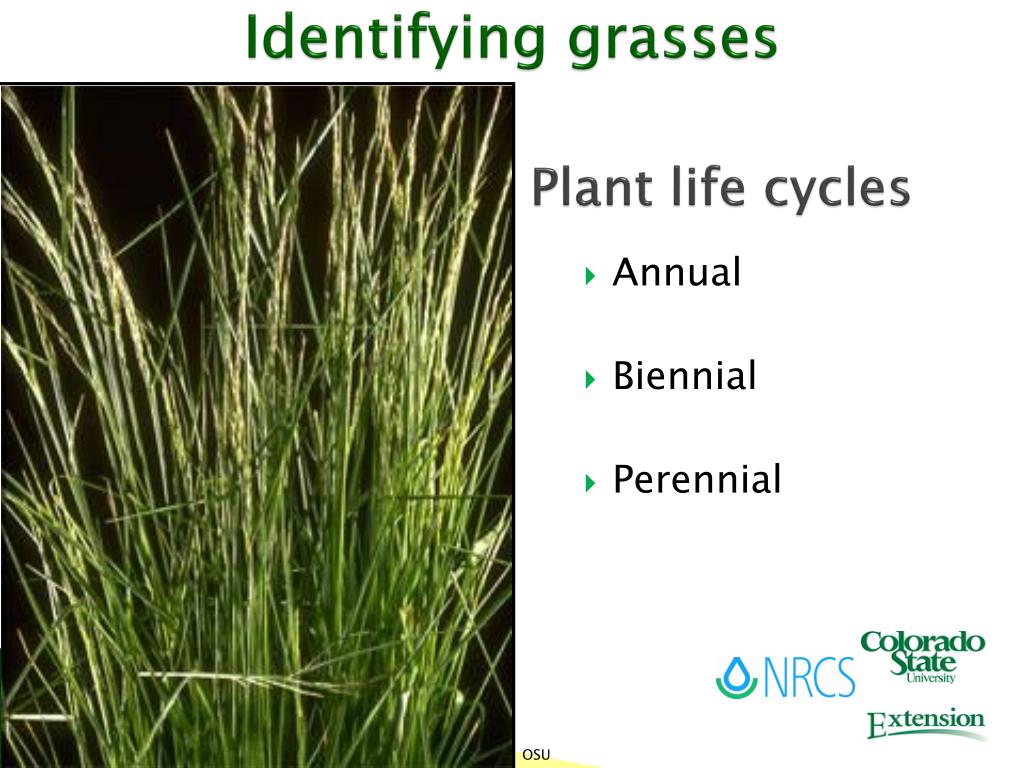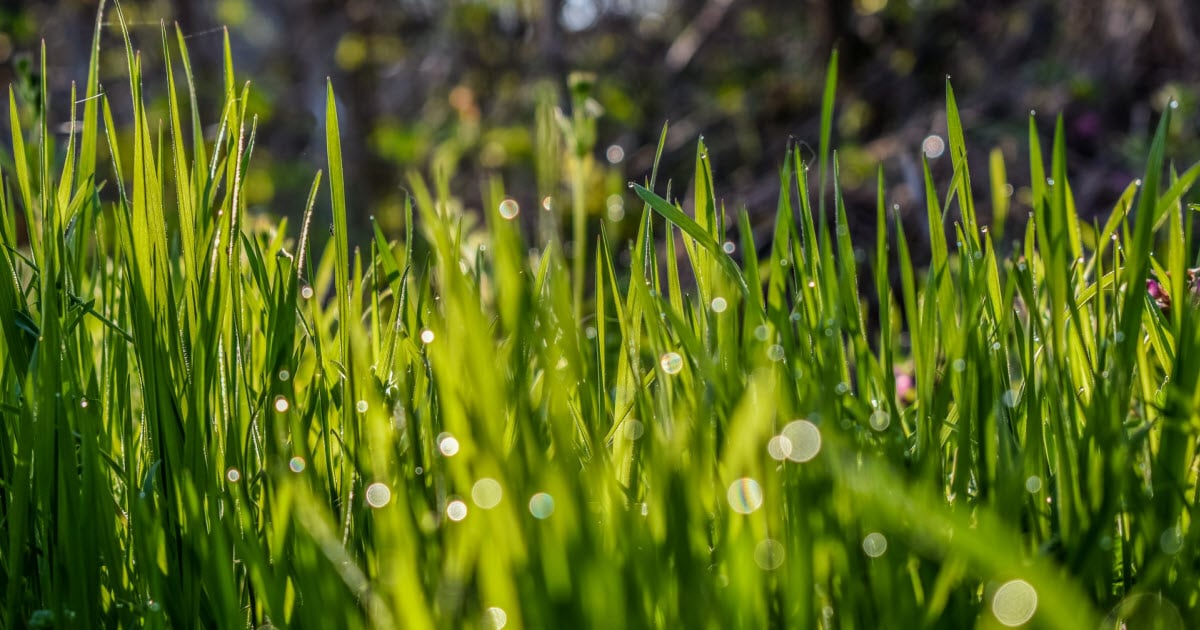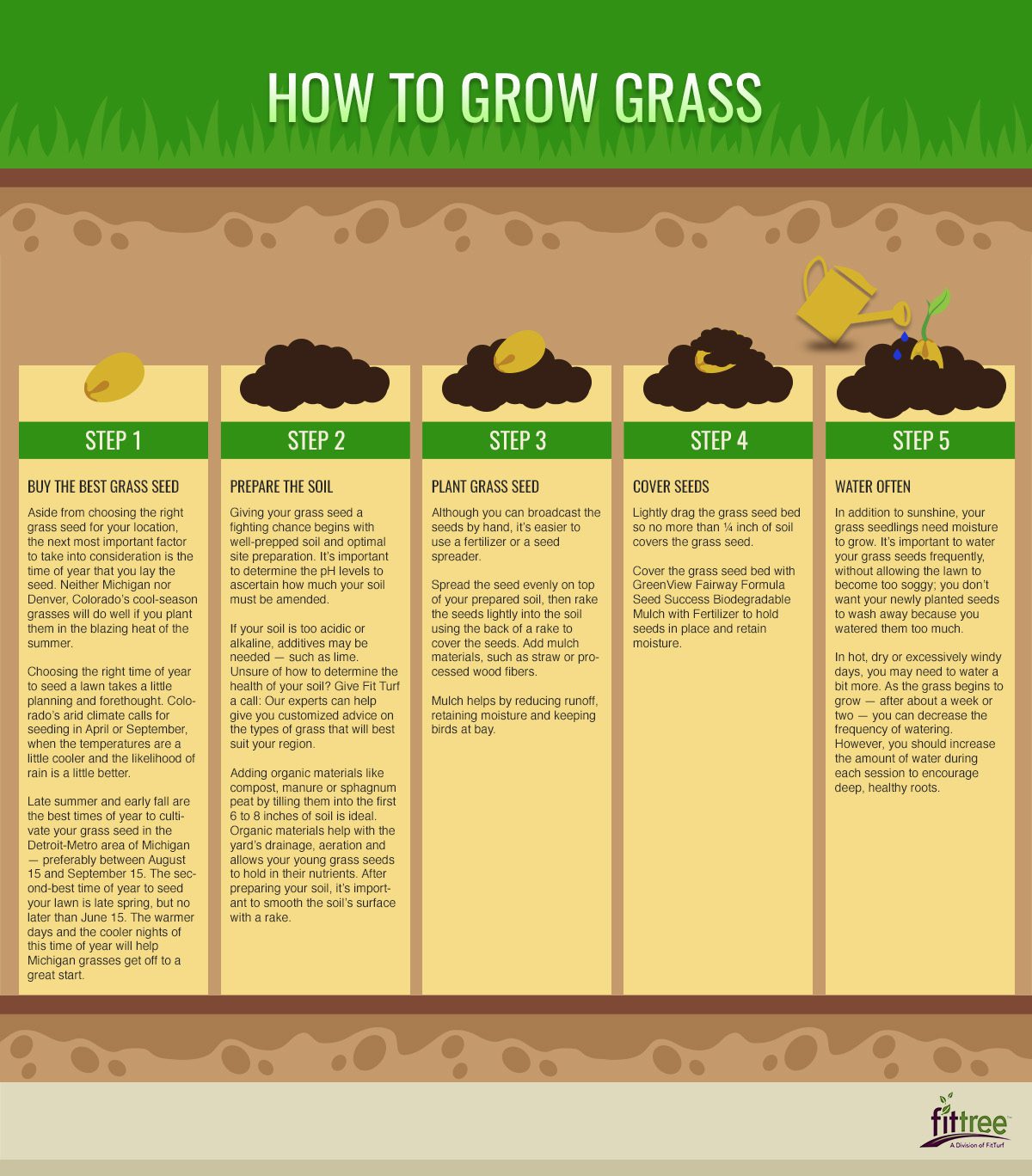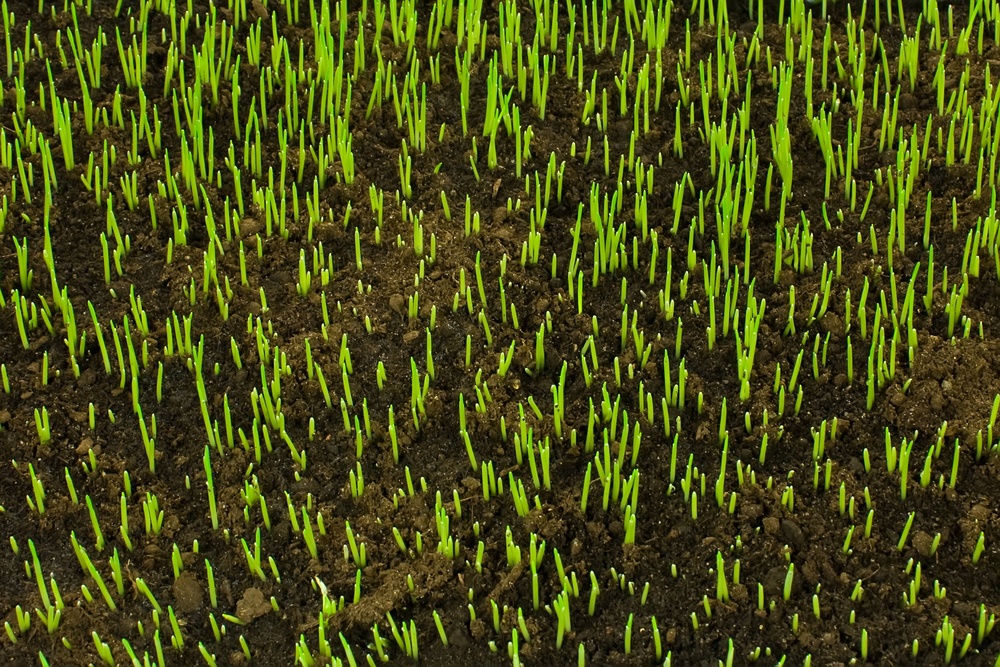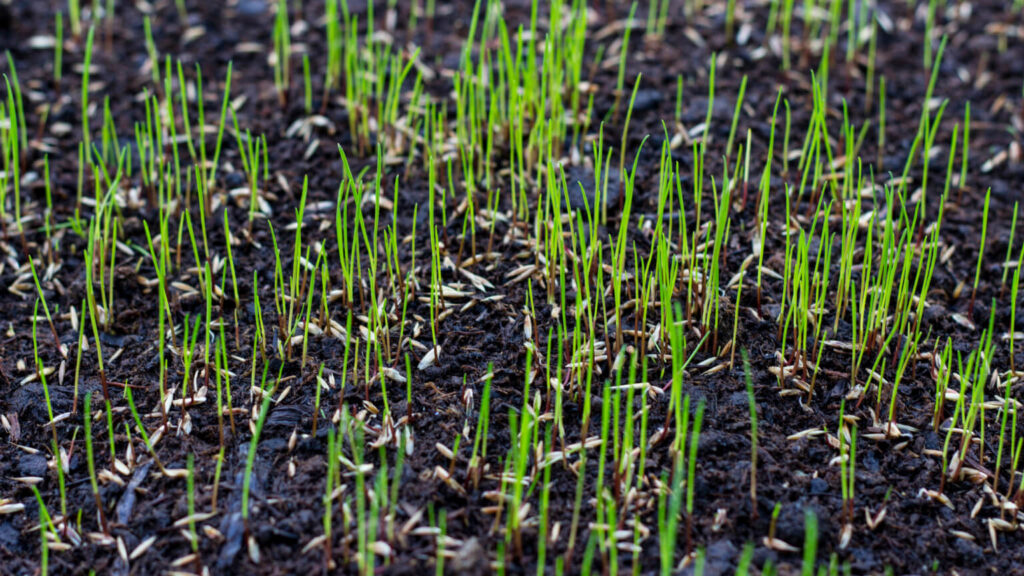Understanding the Grass Growth Cycle
Grass growth is a complex process that involves multiple stages, from germination to maturation. Understanding these stages is crucial to determining how long it takes for grass to grow. The grass growth cycle can be divided into three main stages: germination, establishment, and maturation.
Germination is the initial stage of grass growth, where the seed absorbs water, breaks its dormancy, and begins to sprout. This stage typically lasts between 7-14 days, depending on factors such as temperature, moisture, and soil quality. During this stage, the seedling develops its first set of leaves and roots, laying the foundation for future growth.
The establishment stage follows germination and can last anywhere from several weeks to several months. During this stage, the grass plant develops its root system, produces new leaves, and begins to tiller. The establishment stage is critical, as it sets the stage for the plant’s future growth and development.
The maturation stage is the final stage of grass growth, where the plant reaches its full height and produces seeds. This stage can last several months to several years, depending on factors such as climate, soil quality, and maintenance practices. During this stage, the grass plant continues to produce new leaves and roots, but at a slower rate than during the establishment stage.
Several factors influence grass growth, including climate, soil type, and maintenance practices. Climate plays a significant role in determining how long it takes for grass to grow, as temperature, sunlight, and rainfall can all impact growth rates. Soil type also affects grass growth, as different soils have varying levels of nutrients, pH, and structure. Maintenance practices, such as mowing, watering, and fertilizing, can also impact grass growth rates.
By understanding the grass growth cycle and the factors that influence it, homeowners and landscapers can better determine how long it takes for grass to grow and take steps to optimize growth rates. Whether you’re looking to establish a new lawn or maintain an existing one, understanding the grass growth cycle is essential to achieving healthy, lush grass.
Factors Affecting Grass Growth Rate
Grass growth rate is influenced by a combination of factors, including temperature, sunlight, watering, fertilization, and mowing. Understanding these factors is crucial to optimizing grass growth and determining how long it takes for grass to grow.
Temperature is a critical factor in grass growth, with different types of grass having optimal temperature ranges for growth. For example, cool-season grasses grow best in temperatures between 40°F and 75°F (4°C and 24°C), while warm-season grasses thrive in temperatures between 75°F and 90°F (24°C and 32°C). Sunlight also plays a significant role in grass growth, with most grasses requiring at least 6 hours of direct sunlight per day.
Watering is another essential factor in grass growth, with grasses requiring adequate moisture to grow. However, overwatering can be detrimental to grass growth, leading to shallow roots and increased susceptibility to disease. Fertilization is also critical, with grasses requiring essential nutrients such as nitrogen, phosphorus, and potassium to grow. Mowing is also important, with regular mowing helping to promote healthy growth and prevent weed growth.
To optimize grass growth, it’s essential to provide the right conditions for growth. This includes maintaining a consistent temperature, providing adequate sunlight, watering deeply but infrequently, fertilizing regularly, and mowing at the right height. By optimizing these factors, homeowners and landscapers can promote healthy grass growth and determine how long it takes for grass to grow.
Here are some tips to optimize grass growth:
- Maintain a consistent temperature between 40°F and 90°F (4°C and 32°C) for optimal growth.
- Provide at least 6 hours of direct sunlight per day for most grass types.
- Water deeply but infrequently to encourage deep root growth.
- Fertilize regularly with a balanced fertilizer to provide essential nutrients.
- Mow at the right height to promote healthy growth and prevent weed growth.
By following these tips and understanding the factors that influence grass growth, homeowners and landscapers can promote healthy grass growth and determine how long it takes for grass to grow.
How to Choose the Right Grass Type for Your Lawn
Choosing the right grass type for your lawn is crucial for achieving a lush and healthy lawn. With so many different types of grass to choose from, it can be overwhelming to decide which one is best for your specific climate and region. In this section, we will discuss the different types of grass, their characteristics, and provide guidance on selecting the best grass type for your lawn.
There are three main types of grass: cool-season, warm-season, and transitional zone grasses. Cool-season grasses, such as Kentucky bluegrass, perennial ryegrass, and tall fescue, thrive in cooler temperatures and are commonly found in northern climates. These grasses grow best in temperatures between 40°F and 75°F (4°C and 24°C) and are ideal for lawns that receive partial shade to full sun.
Warm-season grasses, such as Bermudagrass, zoysiagrass, and buffalograss, thrive in warmer temperatures and are commonly found in southern climates. These grasses grow best in temperatures between 75°F and 90°F (24°C and 32°C) and are ideal for lawns that receive full sun to partial shade.
Transitional zone grasses, such as tall fescue and ryegrass, are a mix of cool-season and warm-season grasses and are commonly found in transition zones between northern and southern climates. These grasses grow best in temperatures between 40°F and 90°F (4°C and 32°C) and are ideal for lawns that receive partial shade to full sun.
When selecting a grass type, it’s essential to consider factors such as climate, soil type, sunlight, and intended use. For example, if you live in a hot and dry climate, a warm-season grass such as Bermudagrass may be the best choice. On the other hand, if you live in a cool and wet climate, a cool-season grass such as Kentucky bluegrass may be the best choice.
Here are some tips to help you choose the right grass type for your lawn:
- Consider your climate and region when selecting a grass type.
- Think about the amount of sunlight your lawn receives and choose a grass type that is suitable for that amount of sunlight.
- Consider the intended use of your lawn and choose a grass type that is durable and can withstand heavy foot traffic.
- Test your soil type and pH to determine which grass type will grow best in your lawn.
By considering these factors and choosing the right grass type for your lawn, you can achieve a lush and healthy lawn that will thrive for years to come.
The Role of Soil Quality in Grass Growth
Soil quality plays a crucial role in supporting healthy grass growth. The type of soil, its pH level, nutrient content, and structure all impact the growth and development of grass. Understanding the importance of soil quality and how to test and improve it can help homeowners and landscapers create a lush and thriving lawn.
Soil pH is a critical factor in grass growth, as it affects the availability of nutrients for the grass. Most grasses prefer a slightly acidic to neutral soil pH, between 6.0 and 7.0. Soil with a pH outside of this range can lead to nutrient deficiencies and poor grass growth.
Soil nutrient levels are also essential for healthy grass growth. Grass requires a balanced diet of nutrients, including nitrogen, phosphorus, and potassium. Soil testing can help determine the nutrient levels in the soil and identify any deficiencies.
Soil structure is another important factor in grass growth. Well-draining soil with a mix of sand, silt, and clay allows for healthy root growth and prevents waterlogging. Soil with poor structure can lead to shallow root growth and increased susceptibility to disease.
To test soil pH, nutrient levels, and structure, homeowners and landscapers can use a variety of methods, including:
- Soil testing kits: These kits can be purchased at most gardening stores and provide a quick and easy way to test soil pH and nutrient levels.
- Send a soil sample to a lab: This provides a more detailed analysis of soil pH, nutrient levels, and structure.
- Consult with a soil expert: A soil expert can provide personalized advice on how to improve soil quality.
Once soil quality issues have been identified, there are several ways to improve it. These include:
- Adding organic matter: Compost, manure, or peat moss can help improve soil structure and increase nutrient levels.
- Fertilizing: Balanced fertilizers can provide essential nutrients for healthy grass growth.
- Lime or sulfur applications: These can help adjust soil pH to a more optimal range.
By understanding the importance of soil quality and taking steps to improve it, homeowners and landscapers can create a healthy and thriving lawn that will support optimal grass growth. Remember, how long it takes for grass to grow is influenced by many factors, including soil quality. By optimizing soil quality, you can help your grass grow faster and healthier.
Watering Strategies for Optimal Grass Growth
Proper watering techniques are essential for optimal grass growth. Watering too little or too much can lead to a range of problems, including shallow root growth, increased susceptibility to disease, and reduced drought tolerance. In this section, we will discuss the importance of deep watering, drought tolerance, and how to avoid overwatering.
Deep watering is a technique that involves watering the lawn deeply but infrequently. This encourages the grass to grow deep roots, making it more resistant to drought and disease. To deep water your lawn, water it for a longer period of time, but less frequently. For example, instead of watering your lawn for 10 minutes every day, water it for 30 minutes every other day.
Drought tolerance is the ability of the grass to survive with minimal watering. Some grass types are more drought-tolerant than others, but all grasses can benefit from proper watering techniques. To improve drought tolerance, water your lawn deeply but infrequently, and avoid frequent shallow watering.
Overwatering is a common mistake that can lead to a range of problems, including shallow root growth, increased susceptibility to disease, and reduced drought tolerance. To avoid overwatering, check the soil moisture by inserting a finger into the soil or using a soil probe. If the soil feels dry, it’s time to water. If the soil feels moist, wait another day or two before watering again.
Here are some tips to help you determine the right watering schedule for your lawn:
- Check the weather forecast: Avoid watering your lawn during periods of heavy rainfall or extreme heat.
- Check the soil moisture: Use a soil probe or insert a finger into the soil to check the moisture level.
- Water deeply but infrequently: Encourage deep root growth by watering your lawn deeply but less frequently.
- Avoid frequent shallow watering: Shallow watering can lead to shallow root growth and increased susceptibility to disease.
By following these tips and using proper watering techniques, you can promote healthy grass growth and reduce the risk of problems such as shallow root growth, increased susceptibility to disease, and reduced drought tolerance. Remember, how long it takes for grass to grow is influenced by many factors, including watering techniques. By optimizing your watering schedule, you can help your grass grow faster and healthier.
Mowing and Maintenance Tips for Healthy Grass
Regular mowing, edging, and pruning are essential for maintaining healthy grass. Proper mowing techniques can help promote healthy growth, prevent weed growth, and maintain a neat and tidy appearance. In this section, we will discuss the importance of regular mowing, edging, and pruning, and provide tips on how to do it effectively.
Mowing is one of the most important maintenance tasks for healthy grass. It helps to:
- Promote healthy growth: Regular mowing encourages the grass to grow thicker and healthier.
- Prevent weed growth: Mowing helps to prevent weeds from growing by removing their seed heads.
- Maintain a neat and tidy appearance: Regular mowing keeps the lawn looking neat and tidy.
Here are some tips for mowing your lawn effectively:
- Mow at the right height: The ideal mowing height depends on the type of grass you have. For most cool-season grasses, the ideal mowing height is 2.5-3 inches.
- Mow regularly: Mow your lawn regularly, but not too frequently. For most lawns, mowing once a week is sufficient.
- Use a sharp mower blade: A sharp mower blade helps to prevent tearing the grass and promotes healthy growth.
Edging is another important maintenance task for healthy grass. It helps to:
- Prevent weed growth: Edging helps to prevent weeds from growing by removing their seed heads.
- Maintain a neat and tidy appearance: Regular edging keeps the lawn looking neat and tidy.
Here are some tips for edging your lawn effectively:
- Use a string trimmer: A string trimmer is the best tool for edging your lawn.
- Edge carefully: Edge carefully around trees, gardens, and other obstacles to prevent damage.
Pruning is also an important maintenance task for healthy grass. It helps to:
- Promote healthy growth: Pruning helps to promote healthy growth by removing dead or damaged grass.
- Maintain a neat and tidy appearance: Regular pruning keeps the lawn looking neat and tidy.
Here are some tips for pruning your lawn effectively:
- Use pruning shears: Pruning shears are the best tool for pruning your lawn.
- Prune carefully: Prune carefully around trees, gardens, and other obstacles to prevent damage.
By following these tips and maintaining a regular mowing, edging, and pruning schedule, you can promote healthy grass growth and maintain a neat and tidy appearance. Remember, how long it takes for grass to grow is influenced by many factors, including maintenance practices. By optimizing your maintenance schedule, you can help your grass grow faster and healthier.
Common Mistakes to Avoid When Growing Grass
When it comes to growing healthy grass, it’s just as important to know what not to do as it is to know what to do. Avoiding common mistakes can save homeowners time, money, and frustration in the long run. Here are some of the most common mistakes to avoid when growing grass.
Overfertilizing is a common mistake that can damage grass and the environment. Applying too much fertilizer can burn the grass, contaminate soil and water, and create an over-reliance on chemicals. To avoid overfertilizing, it’s essential to follow the instructions on the fertilizer package and only apply what is necessary. A soil test can help determine the nutrient levels in the soil and guide fertilizer applications.
Underwatering is another mistake that can hinder grass growth. Grass needs adequate water to grow, especially during the germination and establishment phases. However, it’s also important not to overwater, as this can lead to shallow root growth, disease, and pest problems. The key is to find the right balance and adjust watering schedules according to weather conditions.
Neglecting soil quality is a critical mistake that can impact grass growth. Soil is the foundation of a healthy lawn, and neglecting its quality can lead to poor drainage, nutrient deficiencies, and pest problems. Regular soil testing can help identify areas for improvement, and amendments like compost or manure can help improve soil structure and fertility.
Not mowing at the right height is another mistake that can damage grass. Mowing too low can stress the grass, making it more susceptible to disease and pests. On the other hand, mowing too high can lead to an overgrowth of weeds and a decrease in grass density. The ideal mowing height varies depending on the type of grass, but a general rule of thumb is to maintain a height of 2.5-3 inches.
Not monitoring progress is a final mistake that can hinder grass growth. Regularly inspecting the lawn can help identify problems early on, such as pests, diseases, or nutrient deficiencies. Keeping a lawn journal can help track progress, note weather patterns, and inform maintenance decisions.
By avoiding these common mistakes, homeowners can create a healthy and thriving lawn that requires less maintenance and care. Remember, growing grass is a process that requires patience, attention to detail, and a willingness to learn and adapt. With the right knowledge and techniques, anyone can grow a lush and beautiful lawn that enhances their outdoor living space.
How Long Does it Take for Grass to Grow: A General Timeline
Understanding the timeline for grass growth is essential for maintaining a healthy and lush lawn. The growth rate of grass depends on various factors, including climate, soil type, and maintenance practices. Here’s a general timeline for grass growth, including the germination period, establishment phase, and maturation stage.
The germination period is the initial stage of grass growth, during which the seeds sprout and develop their first set of leaves. This stage typically lasts between 7-14 days, depending on the type of grass and environmental conditions. During this stage, it’s essential to keep the soil consistently moist and provide adequate sunlight.
After germination, the establishment phase begins, during which the grass develops its root system and grows its second set of leaves. This stage can last anywhere from 1-3 months, depending on the type of grass and maintenance practices. During this stage, it’s crucial to maintain proper mowing, watering, and fertilization practices to promote healthy growth.
The maturation stage is the final stage of grass growth, during which the grass reaches its full height and density. This stage can take anywhere from 6-12 months, depending on the type of grass and environmental conditions. During this stage, it’s essential to continue maintaining proper mowing, watering, and fertilization practices to promote healthy growth and prevent disease and pests.
Factors that influence grass growth rate include temperature, sunlight, watering, fertilization, and mowing. For example, grass grows faster in temperatures between 60-90°F (15-32°C) and with adequate sunlight. Proper watering and fertilization practices can also promote healthy growth, while regular mowing can help maintain a uniform height and density.
To monitor progress and ensure healthy growth, it’s essential to regularly inspect the lawn and adjust maintenance practices accordingly. This can include checking for signs of disease or pests, adjusting watering schedules, and fertilizing as needed.
While the exact timeline for grass growth can vary depending on the specific conditions, understanding the general stages of growth can help homeowners create a maintenance schedule that promotes healthy growth and a lush, green lawn. By following proper maintenance practices and avoiding common mistakes, homeowners can enjoy a beautiful and thriving lawn that enhances their outdoor living space.
So, how long does it take for grass to grow? The answer depends on various factors, but with proper maintenance practices and a little patience, homeowners can enjoy a lush and healthy lawn in no time. Whether you’re a seasoned gardener or a beginner, understanding the timeline for grass growth can help you create a beautiful and thriving lawn that you’ll enjoy for years to come.


